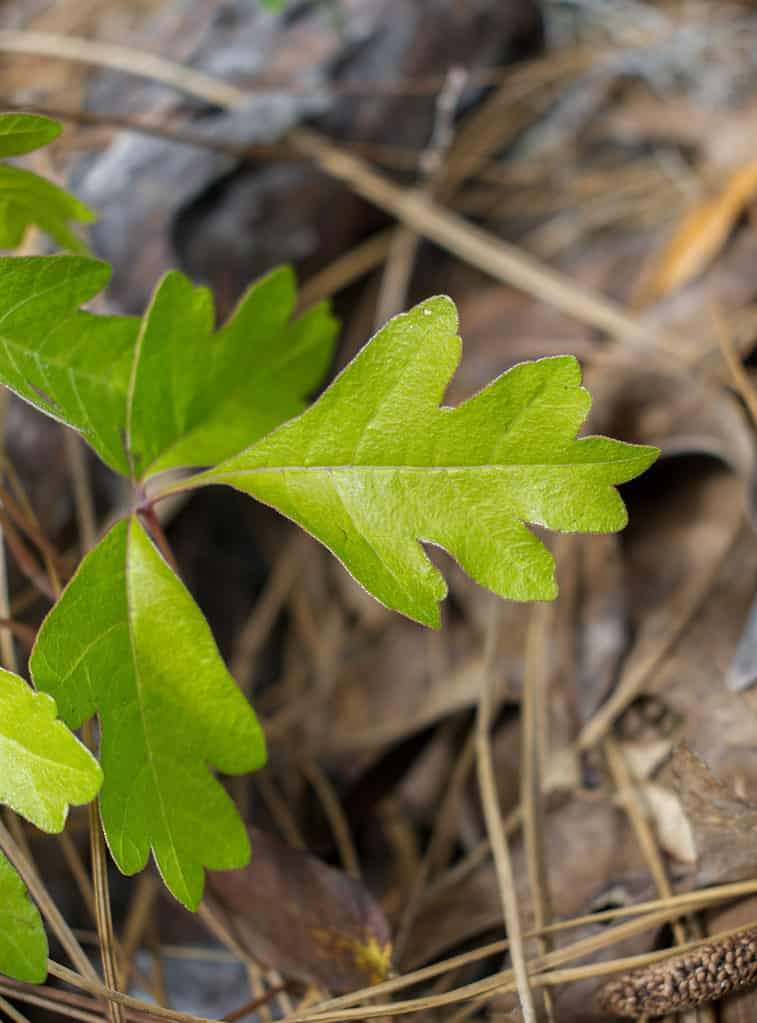Do you like hitting the trails in the winter, but wonder if it’s safe to do so? So many issues arise in the wilderness, from wildlife to insects to poisonous plants. It is natural to wonder whether you will encounter the same problems on winter strolls. One common question is: what happens to poison oak in the winter? Do you still need to be concerned about encountering it? We’ll cover the answers to those questions below.
What is Poison Oak?

Poison oak is a deciduous shrub that is toxic to most humans and animals. It is best to avoid contact with this plant whenver possible.
©iStock.com/Dan Rieck
Poison oak (Toxicodendron diversilobum) is a deciduous shrub native to the southwestern United States and northern Mexico. It is a relatively large shrub, reaching up to ten feet tall and seven feet wide at maturity. There are also some vining species, which easily reach up to fifty feet tall or more. Additionally, these plants produce stunning white blossoms. But you don’t want to become enticed by these.
Most people with the bad luck to encounter it have a serious skin reaction called allergic dermatitis. It lasts a long time and can cause frustration along with the discomfort. The biggest problem is that exposure doesn’t produce an instantaneous rash. Those can develop up to three weeks later. Thankfully, the rash is typically only present where you brushed up against the poison oak.
This irritating plant grows below 5,000 feet and prefers wooded, grassy, and forested areas. It is easily identified by its trifoliate leaves that start out burgundy before turning bright green. The leaves often turn to lovely shades during the fall.
Due to its toxicity via constant, this isn’t an ornamental plant. It strictly lives in the wild.
What Happens to Poison Oak in the Winter?

Throughout much of the season, poison oak has lovely green leaves that look inviting. But don’t touch them!
©ShutterstockProfessional/Shutterstock.com
Like all deciduous trees, poison oak undergoes changes each winter. The first thing that happens begins in the fall. This period is when the leaves begin getting ready for winter. They can change color (though not always). These fall colors include golds and reds. Then, once the weather turns consistently colder, the leaves drop off.
That leaves poison oak looking like a bare-boned shrub. Oftentimes, poison oak resembles a clump of sticks. One exception is vining poison oak varieties. They will look like dead vines rather than sticks. Unfortunately, that doesn’t make the plant any less toxic. The oils that irritate a person’s skin don’t solely exist in the leaves. They are in the trunk and stems as well. Keep your eyes peeled for cinnamon-colored sticks and avoid them, just to be safe. Avoid any clumps of shrubs that may fit the bill, as a precaution.
Thank you for reading! Have some feedback for us? Contact the AZ Animals editorial team.








